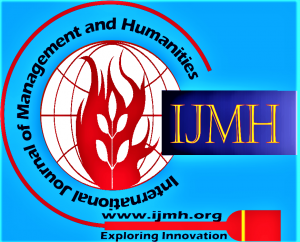![]()
Integrating Agile and the Systems V-Model: Proposing a Hybrid Solution
Marc Berry1, Venkata Allada2
1Marc Berry, Department of Engineering Management and Systems Engineering, Missouri Science and Technology, Rolla, US Minor Outlying Islands.
2Dr. Venkata Allada, Professor, Department of Engineering Management and Systems Engineering, Missouri Science and Technology, Rolla (MO), United States of America (USA).
Manuscript received on 24 October 2025 | First Revised Manuscript received on 29 October 2025 | Second Revised Manuscript received on 05 November 2025 | Manuscript Accepted on 15 November 2025 | Manuscript published on 30 November 2025 | PP: 13-27 | Volume-12 Issue-3 November 2025 | Retrieval Number: 100.1/ijmh.C185012031125 | DOI: 10.35940/ijmh.C1850.12031125
Open Access | Editorial and Publishing Policies | Cite | Zenodo | OJS | Indexing and Abstracting
© The Authors. Blue Eyes Intelligence Engineering and Sciences Publication (BEIESP). This is an open access article under the CC-BY-NC-ND license (http://creativecommons.org/licenses/by-nc-nd/4.0/)
Abstract: This study introduces an Agile Hybrid model that combines the Agile and Systems V philosophies for product development initiatives. Agile frameworks thrive in environments that offer supportive iterative development, continuous integration, and incremental delivery. The current literature introduces existing Agile Hybrid models, but they are presented only at a conceptual level. This leaves practitioners without clear direction on how to implement an Agile Hybrid framework in a complex, real-world scenario. Based on research and practitioner experience, the findings show that the primary challenges are executive understanding and communication links, cultural resistance, management of hardware integration, integration methods, and backlog management. Executives have reported feeling that planning is incomplete when using Agile. This proposed Agile V model provides a practitioner-centric approach to improving these challenges. The models consist of two main components. First, an Agile V Overlay—an Agile/Systems V visual roadmap that aligns Sprints to Gates and ties executive leadership’s interests to the development team’s work evolution— can be used for both project planning and execution. Secondly, a Comprehensive Adaptive Backlog (CAB) is an artefact repository that contains all engineering- and programmatic-type artefacts typically required for new product development initiatives. The CAB ties work artefacts to Sprints and to the Systems V gate review. Combined, the Overlay and CAB provide tools to help Project Managers and Engineering Managers plan and execute complex product development projects in a highly regulated environment. The goal is to provide tools that enable design evolution while maintaining a systematic, gated approach that supports regulatory compliance. The authors have conducted initial interviews with industry practitioners, which have yielded positive results for the model’s utility. Practitioner feedback has been incorporated to fine-tune the model and improve its alignment with real-world applications. Future research will adopt a mixed-methods approach, including interviews with industry practitioners to continue validating the Agile V model.
Keywords: Agile, Systems Engineering, Agile Hybrid, Systems Engineering V Model, Project Management, New Product Development.
Scope of the Article: Management
